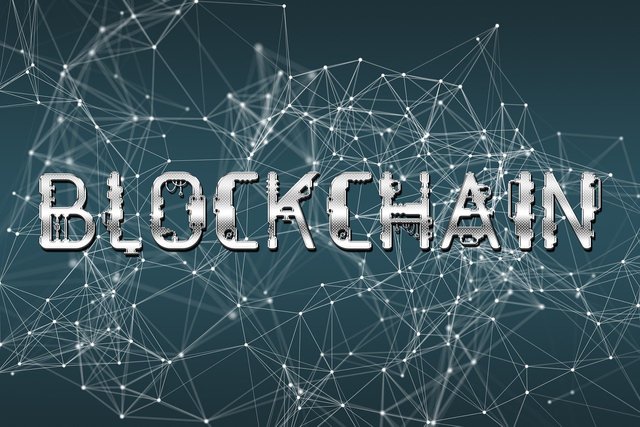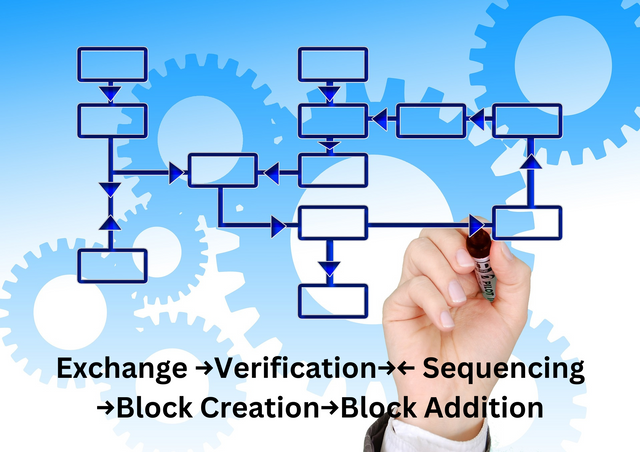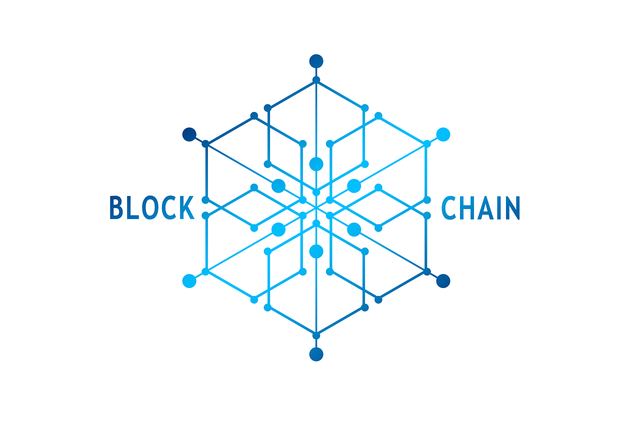Contest Link 👇
||SEC S17-W1 || Secuenciadores Steem blockchain. I invite some of the skilled users I know to participate in this contest. "Honorable Mentions: @mostofajaman @radjasalman @zhanavic69
.png) |
|---|
The fundamental structure blocks of a blockchain are:
Blocks: Each block is a computerized record or record that contains a bunch of exchanges on a blockchain network. Blocks go about as secure holders for conditional data, each with a one of a kind cryptographic identifier called a hash, connecting it to the past block
.
Transactions: These are the activities completed by the members in the organization. They are gathered into blocks after confirmation.
Chain: This is the succession of blocks connected together, framing a solid and permanent chain of information.
Nodes: These are the dispersed organization of shared PCs that approve and affirm exchanges.
Agreement Mechanism: A convention like Evidence of-Work (PoW) or Verification of-Stake (PoS) that guarantees all hubs settle on the condition of the blockchain.
The most common way of sequencing exchanges in a blockchain network involves:
Initiation: Exchanges are started by network members and communicated to the organization.
Verification: Hubs in the organization check the exchanges for authenticity.
Sequencing: A sequencer gets exchanges from the mempool, chooses their request, and bunches them together. This is essential for keeping the ordered control of exchanges.
Block Formation: Checked exchanges are added to another block, which is then connected to the chain utilizing a cryptographic hash.
Finalization: The new block is communicated to the organization, and whenever agreement is reached, it is added to the blockchain, making the exchanges irreversible.
 |
|---|
This interaction guarantees the security, straightforwardness, and uprightness of the blockchain, considering a decentralized and trustless arrangement of exchange recording.

The Steem blockchain sequencer is a critical part of the Steem organization, which is a social blockchain that rewards clients for sharing substance. The sequencer's job is to arrange exchanges before they are concluded in blocks. This is the way it works:
Exchange Initiation: Clients start exchanges, for example, posting content or casting a ballot, which are then communicated to the organization.
Verification: The exchanges are confirmed by the organization hubs.
Sequencing: The Steem sequencer arranges these exchanges in a manner that decides their consideration in the impending block.
Block Creation: When requested, the exchanges are packaged into a block¹.
Consensus: The block is then approved by the organization through an agreement component, guaranteeing it complies to the organization's principles.
Block Addition: After agreement is reached, the block is added to the Steem blockchain.
The Steem blockchain is intended to be quick and versatile, with free exchanges and a block season of just 3 seconds, making it reasonable for constant online entertainment applications.
I'll attempt to graphical diagram to illustrate the process.:
 |
|---|

Different agreement calculations utilized in blockchains include:
Evidence of Work (PoW): Diggers contend to settle complex numerical riddles, and the first to tackle it will add another block to the blockchain.
Verification of Stake (PoS): Validators are decided to make new blocks in light of their monetary stake in the organization.
Assigned Verification of Stake (DPoS): Partners vote in favor of agents to approve exchanges and make blocks.
Viable Byzantine Adaptation to internal failure (PBFT): Requires a base number of hubs to settle on the condition of the organization to approve exchanges and add blocks.
These calculations impact the exchange sequencing process as follows:
PoW requires critical computational exertion, which can dial back exchange sequencing because of the time expected to settle the puzzles.
PoS and DPoS can accelerate the interaction as they depend on stake and designation as opposed to computational power.
PBFT is intended for quicker agreement yet requires an elevated degree of trust among hubs, which can influence the sequencing in the event that trust is compromised.
 |
|---|
Every agreement calculation has its own specific manner of guaranteeing that exchanges are sequenced and added to the blockchain in a way that keeps up with the trustworthiness and security of the organization.

In a blockchain network, various sorts of hubs assume particular parts during the time spent sequencing exchanges. Here is an outline of their jobs:
Full Nodes: These hubs keep a total duplicate of the blockchain and are liable for approving and transferring exchanges and blocks. Full hubs authorize the standards of the blockchain by dismissing blocks and exchanges that abuse the convention. They assume a basic part in the agreement cycle and in keeping up with the trustworthiness and security of the organization.
Light Nodes: Otherwise called Improved on Installment Confirmation (SPV) hubs, light hubs don't store the whole blockchain. All things considered, they depend on full hubs to furnish them with the essential data. Light hubs can check the presence of an exchange in a block without downloading the whole blockchain. They are essentially utilized for everyday tasks like making and getting installments.
Mining Nodes: These hubs are a subset of full hubs that effectively partake in the production of new blocks through mining. In networks utilizing Evidence of Work (PoW), mining hubs succession exchanges by taking care of complicated numerical issues. The main excavator to take care of the issue will add the new block to the blockchain.
Validator Nodes: In Evidence of Stake (PoS) and Designated Confirmation of Stake (DPoS) frameworks, validator hubs are answerable for making new blocks and approving exchanges. Validators are picked in light of their stake in the organization or through a democratic framework. They grouping exchanges by choosing them from the pool of forthcoming exchanges and remembering them for the new block.
Authority Nodes: Some blockchains work on a permissioned premise, where just a select gathering of hubs, known as power hubs, reserve the privilege to approve and grouping exchanges. These hubs are ordinarily known and confided in substances inside the organization.
Each kind of hub adds to the general working and security of the blockchain, guaranteeing that exchanges are sequenced accurately and added to the blockchain in a straightforward and alter

Decentralization and administration are central parts of the Steem blockchain, which is intended to be a decentralized web-based entertainment stage. The significance of decentralization lies in its capacity to disperse control and dynamic across a wide organization of members, as opposed to concentrating it in the possession of a couple. This construction improves security, decreases the gamble of restriction, and advances straightforwardness.
Steem's administration structure depends on a Designated Evidence of Stake (DPoS) agreement system, where partners vote in favor of a gathering of observers to approve exchanges and make new blocks. This framework considers a more fair and local area driven way to deal with administration, as partners impact who is liable for keeping up with the blockchain.
The administration structure influences exchange sequencing in that the chosen observers are liable for making blocks and choosing the request for exchanges inside those blocks. Concerning network security, the observers assume an essential part in safeguarding the organization against assaults and guaranteeing its uprightness. On the off chance that the observers are respectable and act to the greatest advantage of the organization, they can improve its security. Be that as it may, on the off chance that they connive or act noxiously, it could think twice about network.
A reasonable illustration of Steem's administration in activity is the course of content creation and curation on the Steemit stage. At the point when a client makes a post, it turns into an exchange on the Steem blockchain. Witnesses then, at that point, approve this exchange and remember it for a block. The people group can upvote the post, which is likewise recorded as exchanges. The more stake the electors hold, the more impact they have on the prizes appropriation. This interaction arrangements exchanges as well as administers how worth is conveyed among content makers and guardians, mirroring the local area driven nature of the stage.
In rundown, decentralization and administration in the Steem blockchain guarantee that the stage stays secure, straight forward, and lined up with the interests of its local area, while the DPoS.

I invite you to support @pennsif.witness for growth across the whole platform through robust communication at all levels and targeted high-yield developments with the resources available.
 Click Here
Click Here | Category | Contest |
|---|---|
| Photo collect | Canva |
Thanks for reading the Post
14/04/2024
The End |
|---|

Absolutely. The governance structure of Steem is all about how things are managed and organized within the platform. It's designed to be decentralized, which means that control and decision-making power are spread out among a wide network of participants, rather than being concentrated in the hands of just a few people. This setup is really important because it enhances security, reduces the risk of censorship, and promotes transparency.
In Steem, the governance structure relies on something called Designated Proof of Stake (DPoS). It's a system where stakeholders vote for a group of observers who validate transactions and create new blocks. This approach ensures a fair and community-driven approach to governance, as stakeholders have a say in who is responsible for maintaining the blockchain.
When it comes to transaction sequencing, the chosen observers play a key role. They create blocks and determine the order of transactions within those blocks. As for network security, the observers are crucial in protecting the network against attacks and ensuring its integrity. If the observers are trustworthy and act in the best interest of the network, they can enhance its security. However, if they collude or act maliciously, it could compromise the network.
Good luck in the contest...
Downvoting a post can decrease pending rewards and make it less visible. Common reasons:
Submit
Hola. Halagada con tu invitacion amigo. El mundo de las criptomonedas es inmenso es como el infinito. Cada dia se descubren nuevas y hay que ser buen conocedor de la misma.
Suerte en el reto
Downvoting a post can decrease pending rewards and make it less visible. Common reasons:
Submit
Saludos cordiales shahariar1, un placer para mi saludarte y leer tu participación en este reto.
Los mecanismo se consenso llevan a las Blockchain a seguir en el tiempo o a fracasar, muchas veces estos mecanismo evolucionan y se convierten en otros, todo depende del avance del ecosistema, esto lo vimos o lo podemos ver cuando ocurren bifurcaciones.
Buena participación, bendiciones.
Downvoting a post can decrease pending rewards and make it less visible. Common reasons:
Submit
Greetings my friend @shahariar1! Your explanation of validator nodes in Proof of Stake systems is spot on! 💡 They're like the guardians of the blockchain, ensuring only valid transactions make it into the blocks. 🛡️ It's crucial for maintaining network integrity and security. All the best in the contest, success for you! 👍
Downvoting a post can decrease pending rewards and make it less visible. Common reasons:
Submit
Greetings my friend @shahariar1! Your explanation of validator nodes in Proof of Stake systems is spot on! 💡 They're like the guardians of the blockchain, ensuring only valid transactions make it into the blocks. 🛡️ It's crucial for maintaining network integrity and security. All the best in the contest, success for you! 👍
Downvoting a post can decrease pending rewards and make it less visible. Common reasons:
Submit
X promote : https://x.com/Shahari73599011/status/1779406045594706108
Downvoting a post can decrease pending rewards and make it less visible. Common reasons:
Submit
This informative short article distinguishes numerous agreement formulas in blockchains, making clear their influence on purchase sequencing. Each formula from Proof of job to PBFT affects sequencing in different ways, stabilizing computational initiative as well as rate with safety and security as well as count on.
Downvoting a post can decrease pending rewards and make it less visible. Common reasons:
Submit
Upvoted. Thank You for sending some of your rewards to @null. It will make Steem stronger.
Downvoting a post can decrease pending rewards and make it less visible. Common reasons:
Submit
Hey bro I love your in-depth explanation I love it, I love the way you broke down the definitions of note especially how you spoke about the full node, because I also I believe in your opinion that the full node are one of the most important types of node on a blockchain or without their presence thing might go bad.
Thanks for sharing such quality article, wishing you the best please keep it up. Kindly drop a comment to my post using the link https://steemit.com/hive-108451/@starrchris/sec-s17-w1-or-or-steem-blockchain-sequencers
Downvoting a post can decrease pending rewards and make it less visible. Common reasons:
Submit
@drqamu @zhanavic69 @yancar @artist1111 @sahmie @raaji @starrchris I am grateful to you. For encouraging me by leaving so many nice comments on this post of mine. Your comments are also very important to me.
Downvoting a post can decrease pending rewards and make it less visible. Common reasons:
Submit
You are always welcome, and my friend... You are on the right path like everyone of us. Just keep doing you. I'm happy I could be of help to lift your spirit.
Downvoting a post can decrease pending rewards and make it less visible. Common reasons:
Submit
Saludos amigo, sigue trabajando, nos vemos.
Downvoting a post can decrease pending rewards and make it less visible. Common reasons:
Submit
Your post has explained the blockchain process in a clear and simple way with detailed description of the important elements of blockchain and their working. You have explained the structure and operation of Steem blockchain in detail and explained its impact. Thank you.
Downvoting a post can decrease pending rewards and make it less visible. Common reasons:
Submit
TEAM 1
Congratulations! This post has been upvoted through steemcurator04. We support quality posts, good comments anywhere, and any tags.Downvoting a post can decrease pending rewards and make it less visible. Common reasons:
Submit